Today, it is estimated that the Indian healthcare sector is anticipated to grow at a CAGR of 16 per cent to reach US$ 372 billion (₹ 26 trillion) by 2022, according to a Federation of Indian Chambers of Commerce and Industry (FICCI) report, but some of the major challenges faced by healthcare sector such as unequal access to healthcare and rising costs, epidemiological transition being witnessed by India from communicable to non-communicable diseases, etc are causing heartache in its growth. To curb the problems in the sector, the Indian government has included Healthy India as a part of Vision 2030 under which Ayushman Bharat is a big step to ensure health security to the country’s vast population.
Ayushman Bharat
Claimed to be the world’s biggest healthcare scheme, Pradhan Mantri Jan Arogya Yojana (PM-JAY) aims to reduce the financial burden on the poor and vulnerable groups arising out of catastrophic hospital episodes and ensure their access to quality health services. The scheme envisions health assurance of ₹ 5 lakh rupees per family per year, to benefit over 50 crore people, and is the world’s biggest health assurance scheme. The number of beneficiaries of this scheme is roughly equal to the population of the European Union, or the population of America, Canada and Mexico, taken together.
Also Read | Refurbished medical equipment: A bane to healthcare
There are many instances where people are telling their stories on getting free healthcare via the scheme. One such beneficiary of the scheme in Varanasi narrates her experience on national television. This 8th-class student was suffering from appendicitis, said her father who couldn’t afford appendicitis operation. When he came to know about the Ayushman Bharat Card, he got her enrolled, after which she got free treatment. If we believe government website data, in the last six months of its launch, the scheme has already benefited over 18 lakh people, while more than 2.76 crore people have been issued the beneficiary card. The per day average claim for the first 100 days stand out at 5000 claims per day, which is further going to elevate.
The scheme rolled out by Prime Minister Narendra Modi from Ranchi on September 23, 2018, was termed as a ‘game-changer initiative to serve the poor’. Despite sustained focus on the core health infrastructure, around 55 per cent of the country’s households do not use or are not able to use government facilities. This is mainly because of perceived poor quality of care – the National Family Health Survey for fiscal 2016 had revealed this was the primary reason for not using government facilities – and lack of availability of facilities nearby.
To improve the supply of healthcare services in under-served areas and to improve the demand for quality healthcare services, Niti Aayog has proposed the Public Private Partnership (PPP) model under Ayushman Bharat, which will definitely be an advantage for private players. Private healthcare providers view it as a business opportunity to scale up their operations as the scheme brings out a whole new health sector in the country where the PPP model will play the primary role. According to Ayushman Bharat government website, so far, 15,291 number of hospitals have been empanelled under the scheme, out of which 15 per cent are private hospitals.
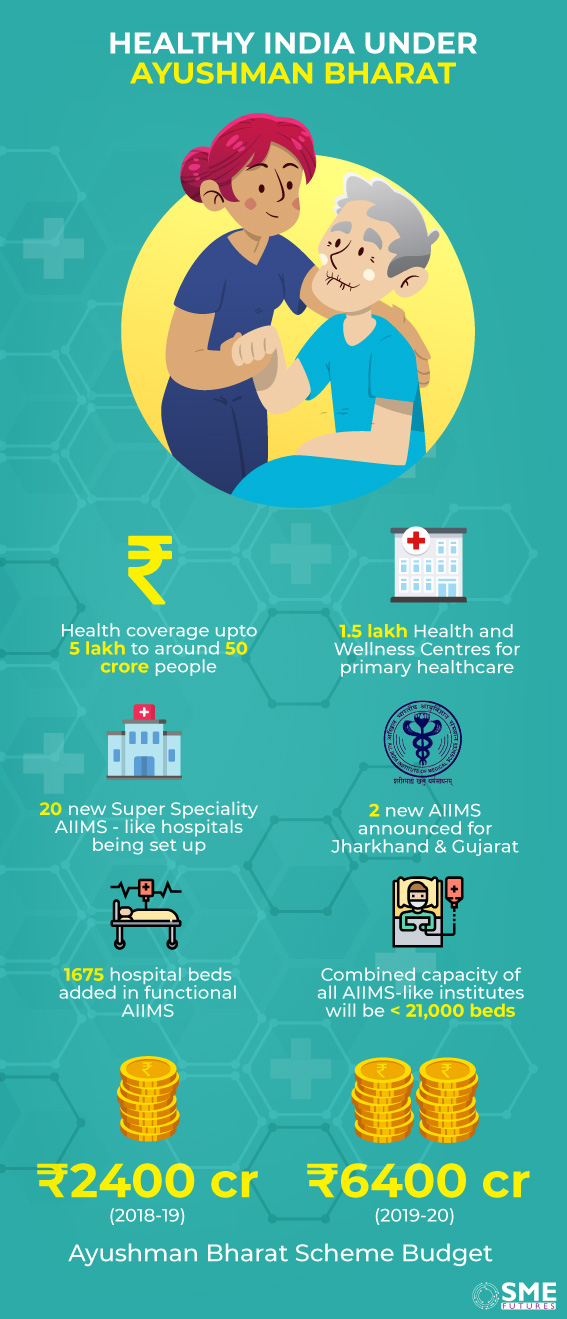
Speaking at the conference at the 25th edition of Medical Fair India held at New Delhi, Indu Bhushan, CEO of Ayushman Bharat mission advocates more and more involvement of private players in the movement to achieve the Vision 2030. He says, “The future of this movement lies in a good integration between the private and public healthcare entities. I urge all entities to join in and make the change happen”. The scheme will have a multiplier impact on the healthcare and allied sectors like pharmaceutical, diagnostics and medical devices, and the overall Indian economy by way of employment generation.
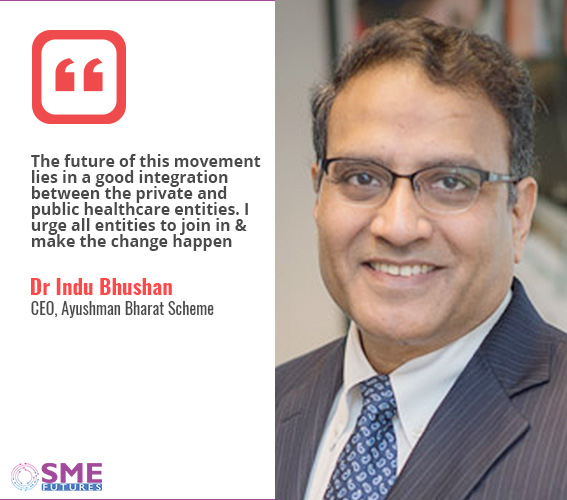
“Private players are of utter importance to the scheme”, says Ayanabh Debgupta, co-founder and Director of Kolkata-based Medica Superspeciality Hospital, which is empanelled under the scheme in Ranchi and other districts. He adds, “Today, at least 70 per cent of healthcare facilities are being provided by private players; if you do not include the private players, how will the government run the scheme”? A FICCI report confirms Debgupta’s comment; the report reveals that the private sector that has been providing 60 per cent of in-patient care has contributed to 70 per cent of bed capacity expansion in the last decade, which will be crucial keeping the government scheme in mind.
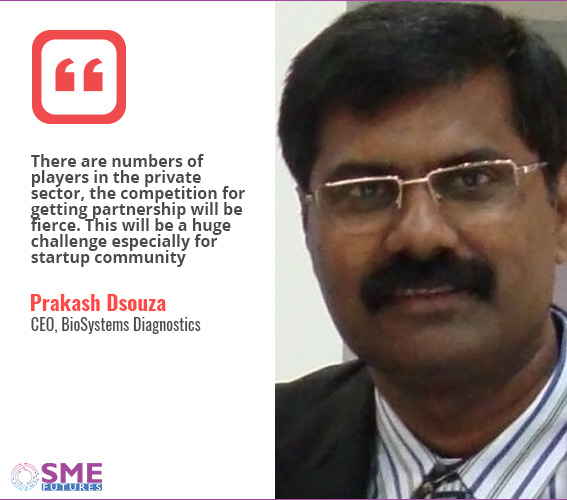
Prakash Dsouza, CEO of Chennai-based BioSystems Diagnostics, says, “Ayushman Bharat scheme has huge potential as I believe it will help the common people afford high-cost diagnostics tests. Also, this scheme has brought great advantage for private players in the healthcare sector as well as startups that have different product lines related to health”. According to Dsouza, the scheme will facilitate private players to expand their operations in a much faster way. The company is already working on three government projects in Andhra Pradesh, Jharkhand and Maharashtra under PPP mode, while it is working on getting engaged with Ayushman Bharat soon. “We are very keen to be a part of this scheme and hoping this financial year we will get engaged under it in some of the states. In that way we can associate with private hospitals as well as public hospitals, thus expanding our footprint”, informs Dsouza. At the time of selection of private players for this scheme, the government will pay them a fee per procedure or package of service as determined through competitive bidding. This will eventually reimburse the private partner on behalf of the referred beneficiary. The agreement will be for 15 years with the opinion of renewal and the rates committed will be as prescribed under Ayushman Bharat.
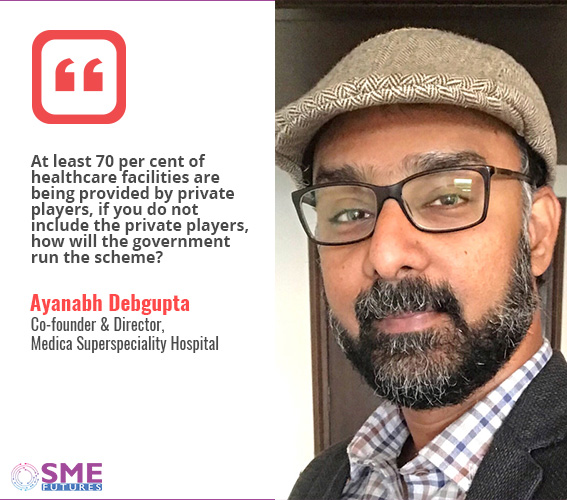
Healthcare startups looking to scale
Health startups, on the other hand, are redefining the healthcare sector, and working in collaboration with the government can create a symbiotic relationship and take healthcare to the next level. A Bengaluru-based tech startup MediBox is a B2B healthtech platform. Bhavik Kumar, its founder and CEO, is positive about the business opportunity that his platform is getting through the scheme. “I believe overall the sector will grow through the scheme. We are indirectly getting benefit from the PM-JAY scheme business-wise. Obviously there will be medicines required post-treatment under the scheme and, hence, the platform will get more users, who are mostly retailers, better and large transactions”.
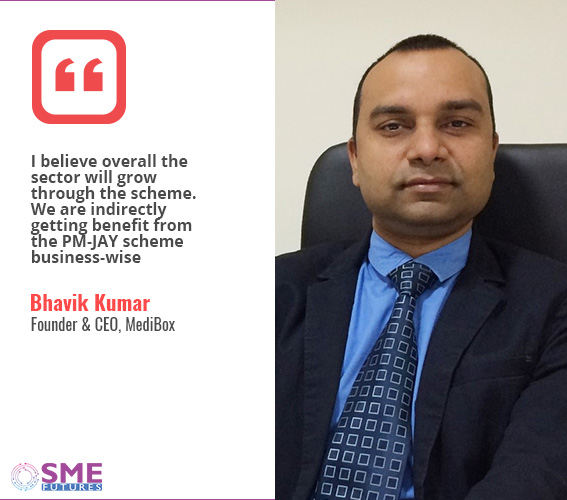
The platform integrates all sorts of pharmacies where the users can find the availability of medicines across different stores and can place an order online. Another healthcare and wellness startup Swasthya Gold is soon to launch its app, where one can avail all healthcare and wellness services on the platform, is looking for collaborating with hospitals and doctors. Its founder and Director, Dr Akhil Kukreja, told us that his startup is already planning to get into partnerships with hospitals empanelled under the scheme. He says, “We are definitely going to get associated with the PM-JAY scheme because our startup will get support, and our platform could scale up from state-level to the national-level”.
Diagnostic Market Will Get Major Boost
Industry players are all of one belief that the scheme is the most ambitious healthcare care programme for the sector that will create several opportunities for the private sector’s engagement and participation in the ecosystem. The diagnostics sector is one of the sector’s large segment that is first in the line of defense against the disease and ailments, and under PM-JAY, it is going to see major growth. According to a Research and Markets research report “Indian Diagnostic Services Market Outlook 2020”, the diagnostic services market is expected to continue growing at 27.5 per cent for the next five years. This growth is likely to be driven by improving healthcare facilities, medical diagnostics and pathological laboratories, private-public projects and the health insurance sector. Moreover, with the rise in health consciousness in the society and the rising burden of chronic diseases, this market will swell to approximately ₹ 860 billion in revenue by 2020. According to the experts dealing in the diagnostics sector, the need of the hour is to put more weight on the equitable accessibility and availability of quality diagnostics since the sector is already dealing with complicated healthcare issues like incorrect, unnecessary, misleading or over diagnosis and treatment.
“Ayushman Scheme will not only increase in penetration of diagnostics but also encourage the citizens to make their health plans in conductions with retirement plans”, says Zoya Brar, Founder of Core Diagnostics, which is based out of Gurgaon. She further says that the government’s announcement to incentivise private investment at district level will boost the establishment of hospitals and healthcare-related facilities in Tier 2 and 3 cities, which can change the healthcare landscape in India considerably in rural and urban areas, and across classes of patients.
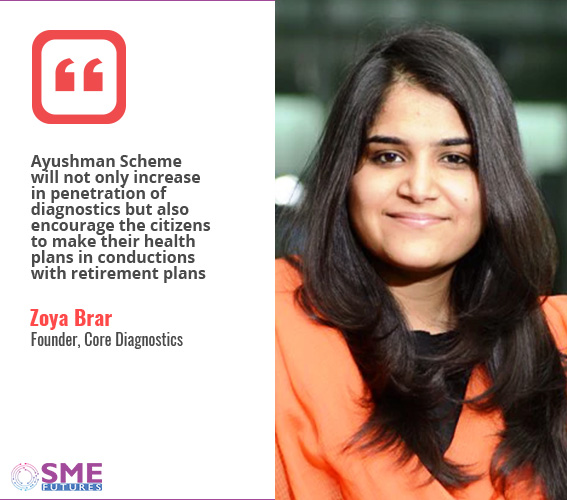
Bengaluru-based analytics-led startup Niramai, which provides a portable, compact screening device for breast cancer screening is enthusiastic to be a part of the scheme and sees a huge opportunity for the growth of the startup in the diagnostics sector. CEO of the startup, Dr Geetha Manjunath tells us about the solution, “Niramai’s portable solution can be used for mass screenings in villages, PHCs as it is low skill required, affordable with early-stage cancer detection feature. With the scheme in compliance, we can identify, enable and validate the people who require the treatment for breast cancer and make them aware about the benefits of the scheme”. The startup is aiming to be a screening partner under the scheme. “We want to engage with the scheme as a screening partner for the diagnostics of breast cancer for women health in India. This is how we can scale up our startup with the help of the PM-JAY scheme”, says Dr Manjunath. Overall, industry sources foresee a well-coordinated partnership between private and public sector to foster innovation in devising low-cost new diagnostics solutions and customising the existing ones for the greater good of the deprived section of the society.
Infrastructure Needs Private Players, But There are Challenges
The National Health Protection Scheme is providing financial support to states to strengthen the public health system, including upgradation of existing and construction of new infrastructure; however, existing healthcare infrastructure system needs a lot more improvement especially in rural populace. While setting up government hospitals and medical colleges has limitations in addition to lack of skilled professionals, high capex is another challenge. Notably, for Ayushman Bharat, the central government is giving impetus to tertiary care hospitals as well. According to CRISIL Research, there are 23,582 government hospitals having 710,761 beds in India, and tertiary healthcare government facilities such as AIIMS-like institutions are limited. AIIMS Delhi has more than 2,000 beds (including newly-constructed emergency wards and trauma centre) and six newly-formed AIIMSs (Bhopal, Bhubaneshwar, Jodhpur, Patna, Raipur and Rishikesh) have an operational capacity of 2,744 beds. There is also a huge gap of professionals; as per Ministry of Health And Family Welfare, almost 60 per cent faculty posts and 80 per cent non-faculty posts in these six AIIMS-like institutions remained vacant as of February last year.
However, under Pradhan Mantri Swasthya Suraksha Yojana (PMSSY), 14 new AIIMS-like institutes are under various stages of approval and construction, with most likely to be completed only after 2020. Once operational, the combined capacity of all AIIMS-like institutes will be more than 21,000 beds, which will benefit patients registered under Ayushman Bharat. Research has revealed, over the past four years, the central government has already spent ₹ 7,527 crore (fiscals 2015 to 2018) on the PMSSY scheme, and has budgeted ₹ 3,825 crore for the fiscal 2019-20. A robust CAGR of 47 per cent in expenditure on the scheme clearly hints at the central government’s emphasis on tertiary care infrastructure.
With the given capital outlay and execution time per institute, it’s a mammoth task, both financially as well as operationally, to emphasise on PMSSY. Besides this, once such facilities are operational, retaining experts and skilled professionals is another major challenge. Having said that, the private players are open to collaborate with the government and believe that they can make a huge difference in the demand and supply gap of professionals in the sector.
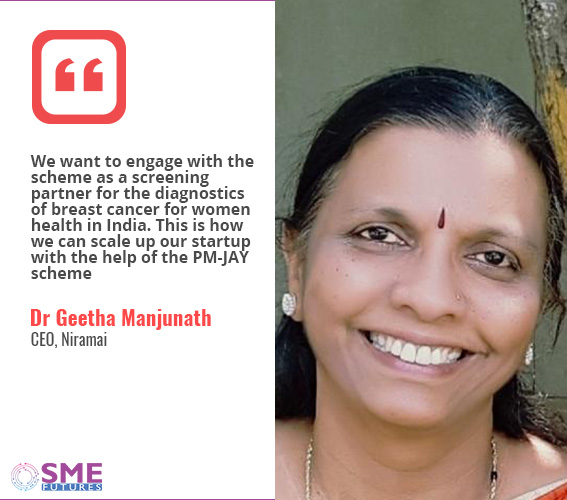
“The government will definitely need the support of the private sector in rapidly expanding secondary and tertiary care health services in the country”, says Swadeep Srivastava, Founder and Managing Partner of New Delhi-based India Virtual Hospital (IVH). The company is a tech-enabled specialised medical concierge service addressing the needs of domestic and international patients, and helps patients to make an informed medical decision with expert consultations, working out the best medical treatment plan and much more. Srivastava opines that small and medium players can be backbone to the scheme and help with sensitising people about the scheme. He says, “Although, Ayushman Bharat provides a great opportunity window for big corporate hospitals who deliver tertiary care, it doesn’t mean that small and medium healthcare providers cannot be a part of this initiative”. Srivastava further gives an example of his firm and says that IVH is a great example of a small organisation contributing towards this landmark. “We sensitise people in tier 2 and tier 3 cities and then help patients to reap the benefits of the scheme for their healthcare requirements. India is the country with the second largest population size and the government alone cannot guarantee the success of such huge schemes. It is players like us that can close the communication gap and help in achieving holistic healthcare targets”.
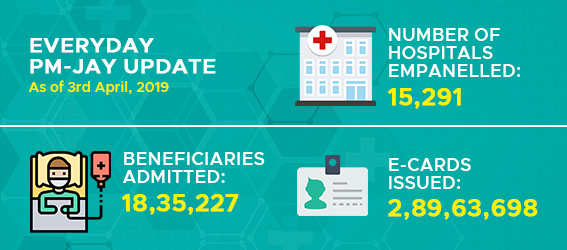
On the other hand, small and medium businesses foresee fierce competition, as incentivising private investment will also attract large corporate giants to expand beyond metro cities to tier 2 and tier 3 cities. It can create a challenging scenario for smaller healthcare providers existence. Therefore, there is a need for a regulatory framework to regulate the misuse or exploration and malpractices of Ayushman Bharat scheme benefits. While competition among players to get partnership will be another challenge, “as there are numbers of players in the private sector, the competition for getting partnership will be fierce. This will be a huge challenge especially for startup community”, explains Dsouza.
According to Dr Manjunath, another challenge for the health SMEs lies in figuring out the decision-maker between the state and the centre, as healthcare providers want to work with the government but the gestation period of healthcare projects can be long. “Healthcare is a state matter and Ayushman Bharat is a central scheme. So, private players when dealing with partnerships need to figure out the ecosystem and the decision-maker for smooth functioning”, he says. It is an undeniable fact that the private sector expects a fair return on its investments. Given the longer gestation of healthcare projects, the internal rate of return (IRR) of 15 per cent to 18 per cent is expected, for which cash flow has to be positive in all consecutive yearly operations. However, in reality, very few firms are able to achieve and sustain the desired financial performance.
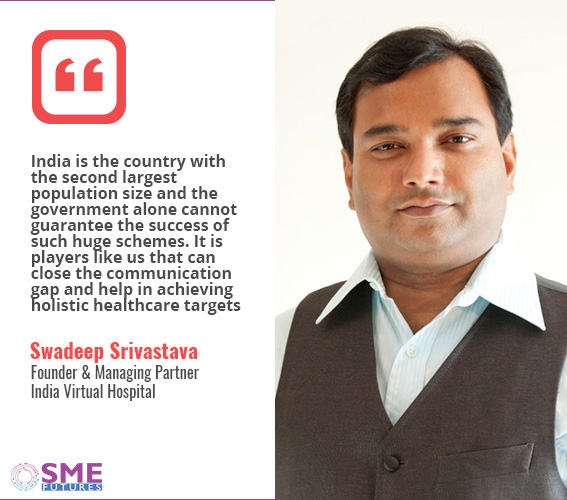
Another challenge is to deliver the service at a nearly affordable price to a large volume of people in India, especially in rural regions. According to the experts, costing for healthcare services is complex due to delivery of services and intensity of consumption of resources. It also depends upon the location and size of the healthcare facility. Having said that, package rates of procedures covered under the National Health Protection Mission (NHPM) to provide quality services to beneficiaries is pivotal to private healthcare providers to sustain and for the success of the scheme. Dasgupta comments on this; he says, “Pricing of packages and proper costing approach to derive reimbursement cost is imperative for the success of PM-JAY with private partnerships. It is quite low right now and needs to be revised for the hospitals empanelled for the sustainability and viability of medium business in private sector”.
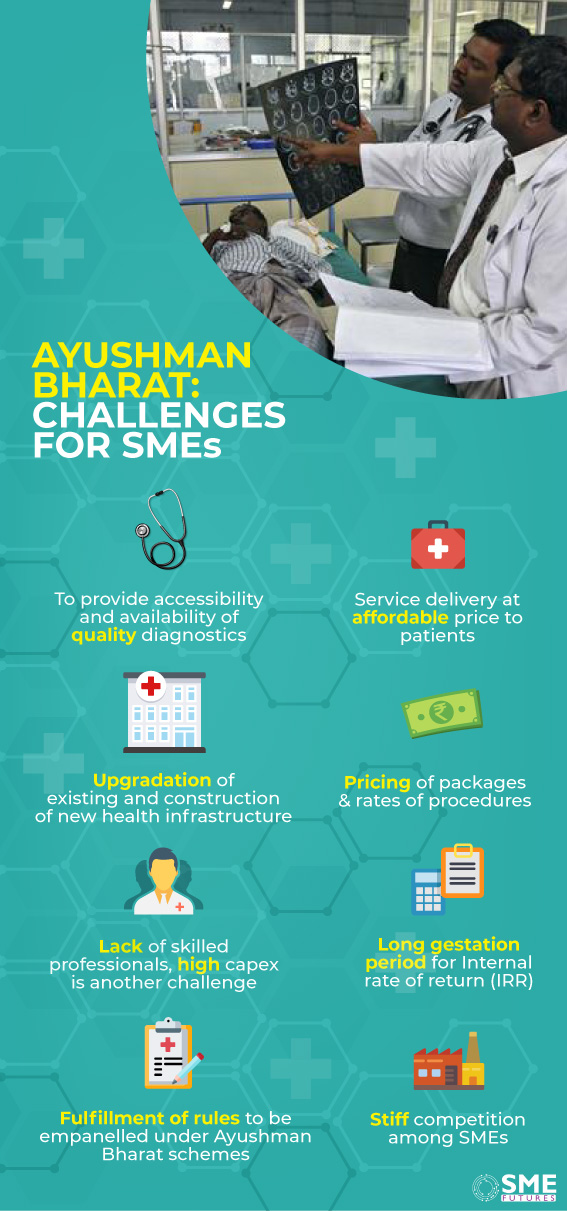
Given the country’s public healthcare infrastructure, most patients are left with no option other than visiting private clinics and hospitals. Through the Ayushman Bharat scheme, the government is heavily relying on the private sector by providing a range of SOPs to privately-owned hospitals, such as land and funding. As per the pay-per-use guidelines under the scheme, the government will provide space in district hospitals, while private players will create infrastructure and deliver instruments as well as manpower to provide treatment and further get paid per procedure. It will also give an impetus to the training and employment of skilled healthcare technicians, agents, nurses, doctors and allied health professionals for the delivery of quality of services in secondary and tertiary healthcare. Overall, the benefits of the scheme have resulted in a win-win situation for the people in need and the private healthcare providers by getting a constant flow of customers and the government by addressing healthcare issues holistically.











